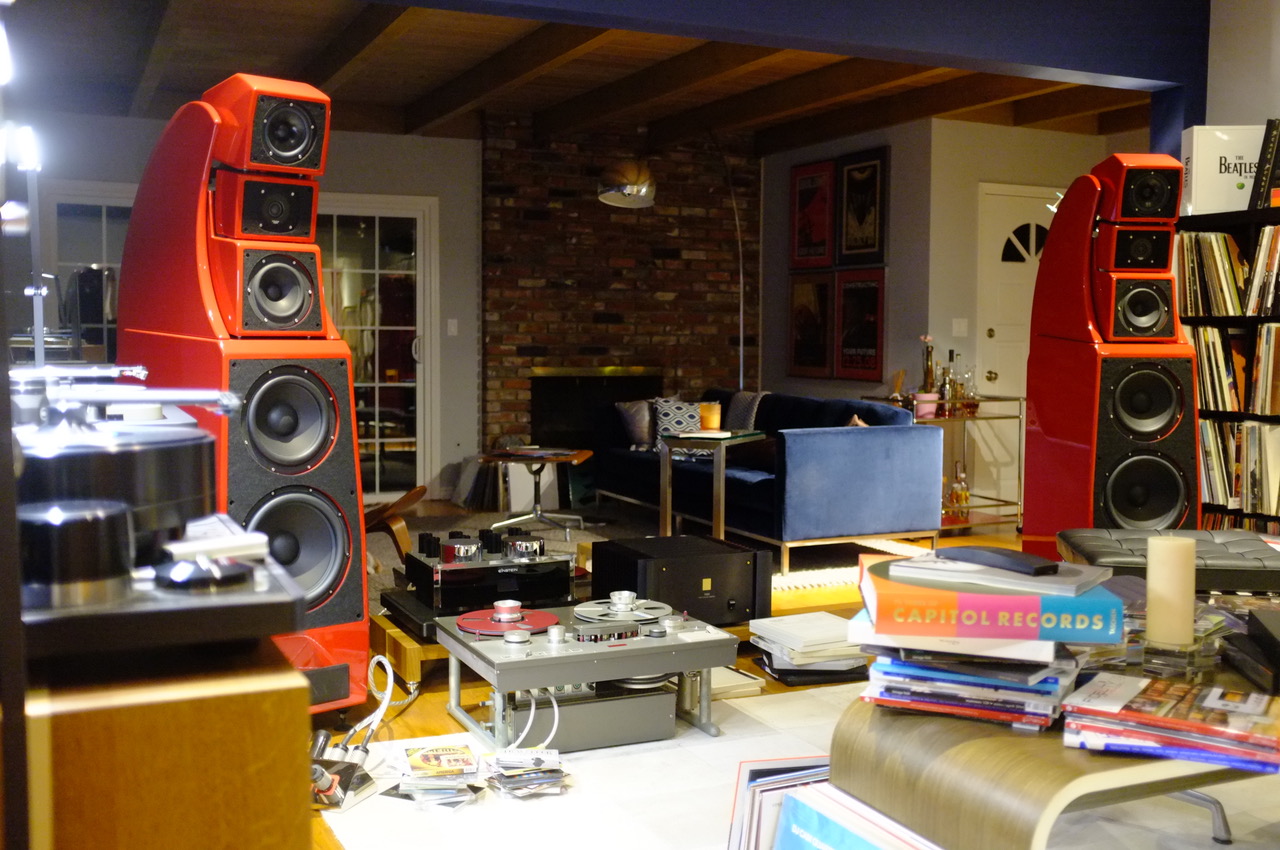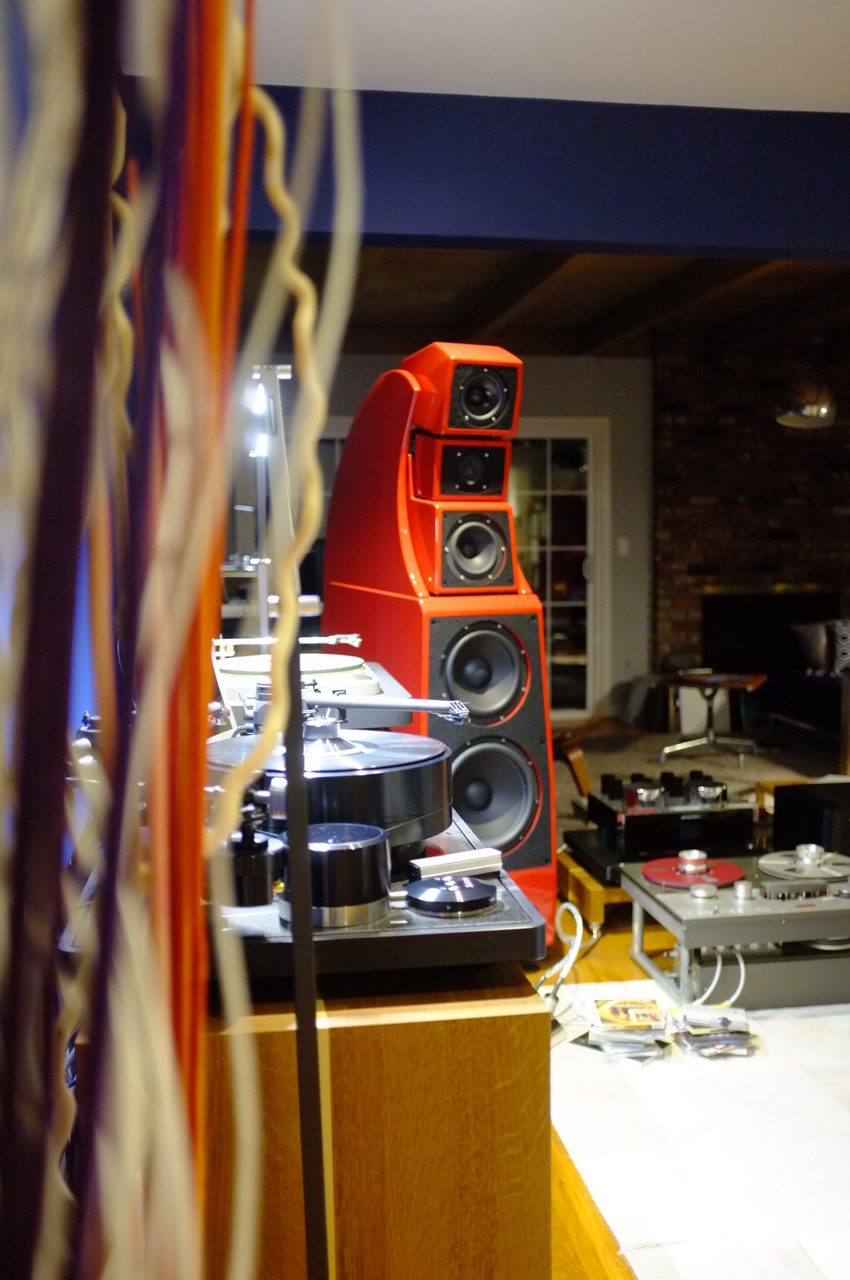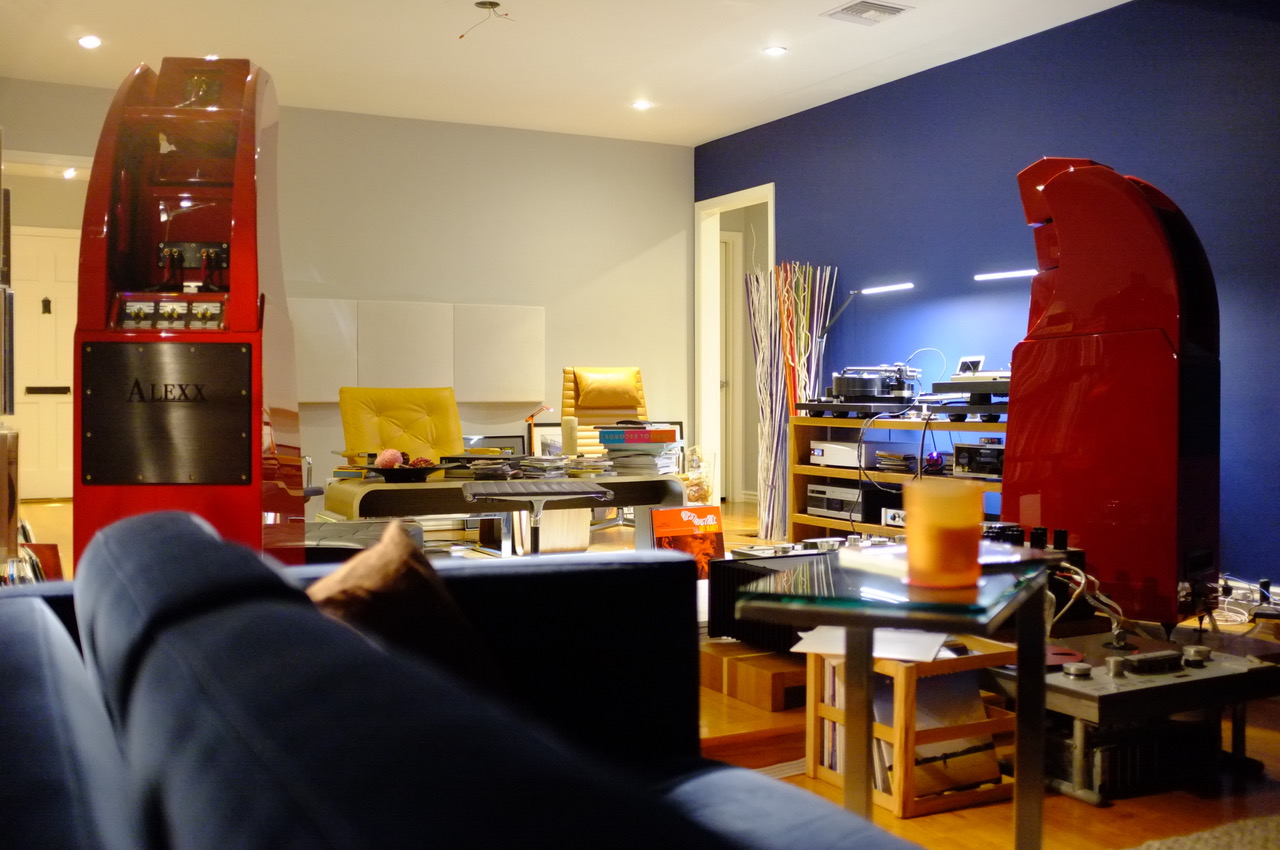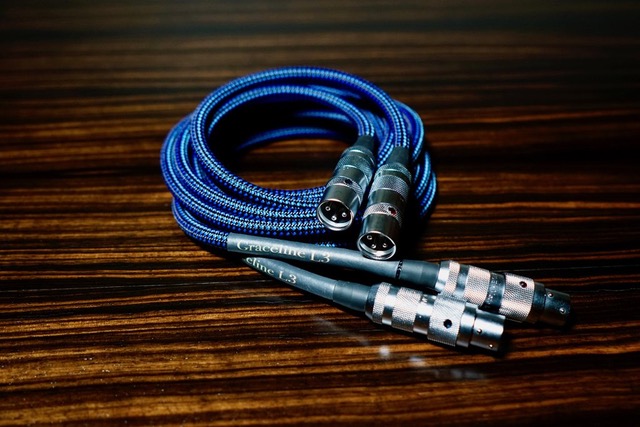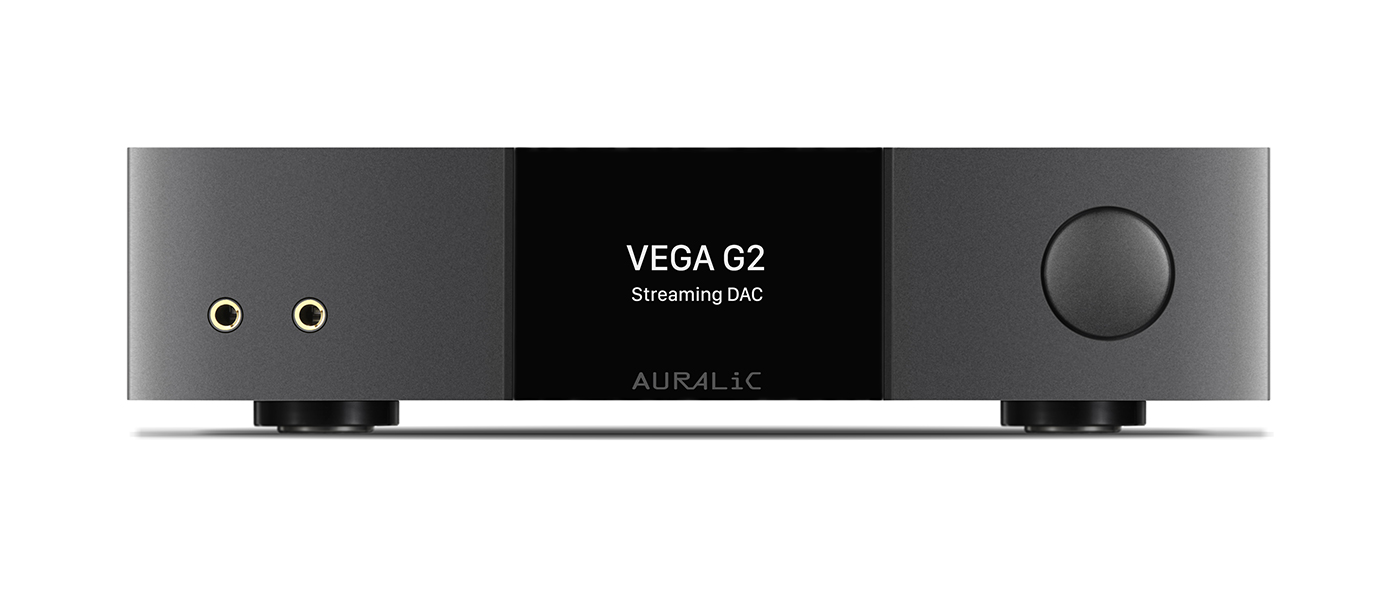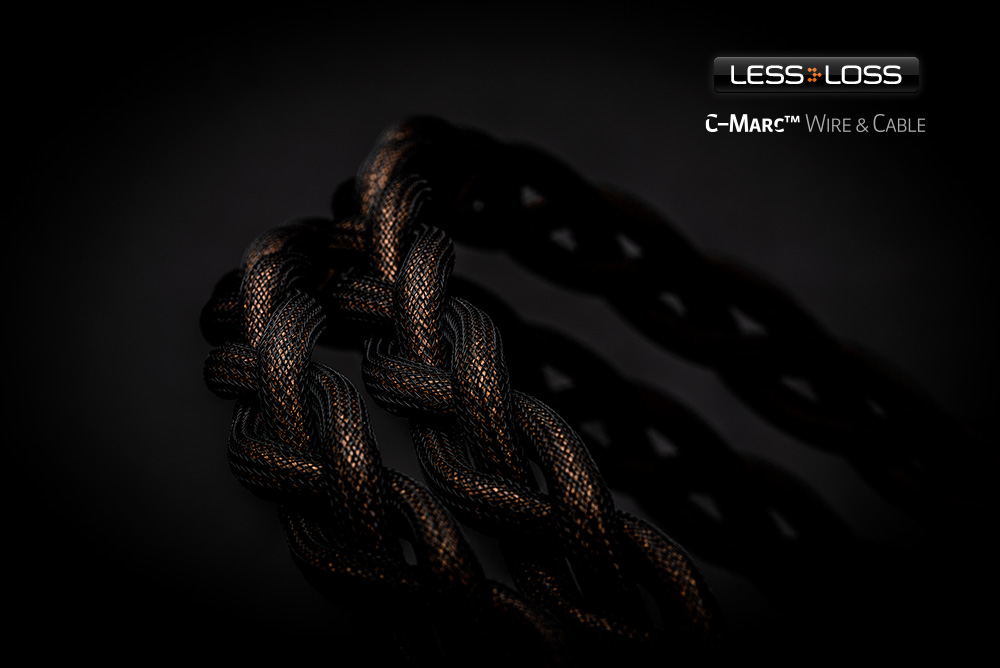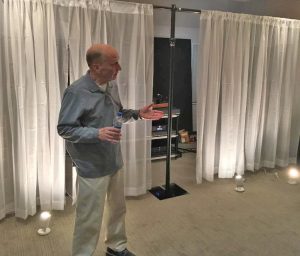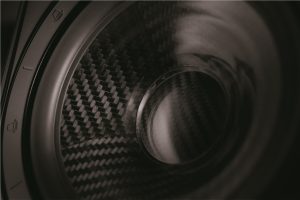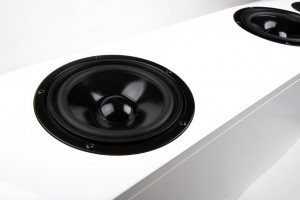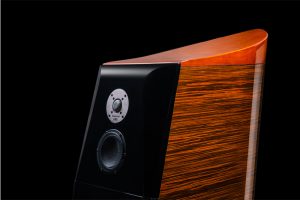Wilson Audio Alexx Loudspeakers
Every once in awhile (though frankly, more frequently than I care for), I chuckle, nay, swing my arms and hands in protest at the uninformed nonsense I hear on otherwise fine and decent radio shows like Leo Laporte and his part time sidekick Scott Wilkinson of AVSforums, a highly respected audio video forum that specializes in home theater and multimedia systems. Most recently a discussion around Devialet's Phantom speaker came up, and much to my viral hand and fist shaking, both hosts ridiculed the "insanity" of spending $5000 on a loudspeaker. "Why would you?"; "How silly do these companies think we [the consumer] are?" Typically, I will attempt to call the show to offer an alternative voice of reason, alas, as with so many popular podcasts and radio shows getting through, or past the call screener, becomes a process of feeble frustration. When—rarely—I do manage to get through the call screener, usually some lost soul even less informed than the host they seek to protect, and a lively discussion ensues generally resulting in a disqualification to join the humorous discussion.
The juxtaposition of our hobby couldn't be more polar opposite I will often opine; here we are in an industry that, looking from the inside out, seems to be thriving in some ways; yet we too are faced with increased "resistance" and two seeming paradoxes: on one hand the high-end industry constantly faces criticisms of an ever-shrinking install base, on the other, prices of the best of the best seem to be ever escalating. Whereas even a decade or two ago the thought of spending a hundred, or even two hundred thousand dollars on speakers, amplifiers, cables (!), and various source components would have been met with radical ridicule, today these price points are simply status quo, if not even increasing in overall presence. Personally, I think this is simply a reflection of an increasing need to push the engineering envelope further and further, and, the cost of turning such engineering into sellable products escalating with rapid pace, and one can quickly see the multiplier effect driving raw good and production costs to ever greater heights. When, like Wilson Audio, you are steadfast and determined to continue to proudly wave the genuine made in America sign, costs will generally rise in the extreme high end, specialty market segment. Conversely, you want cheap, low-fi, low-end, well, there's plenty for you to look at and consider. The best as they say always has a price. Value doesn't come from magic tooth fairies or bureaucrats.
Naturally, some of the HiFi products demanding such high acquisition costs are pure marketing drivel; I would, however, factually argue that most are not and are perhaps even bargains in the way that for example a Rolex Daytona is a bargain considering the incredibly astounding levels of engineering, machining, and production scale it takes to make one. Compare Rolex's very fine in house chronograph movement with watches costing far in excess of the Daytona's price point and you will easily recognize my point. To wit, AP's famous Royal Oak chronograph, which is double the price of the Daytona, doesn't even feature a coveted (and expected) in house movement. Wilson Audio's latest large speaker system, Alexx, retails for $109,000, which while undoubtedly expensive (when specifically compared Wilson's own outgoing semi-similar MAXX which last retailed for $75,000, [Nov. 2014]), does in my most not so humble of opinions legitimately command this sum of hard-earned greenbacks.
Even as Alexx appears to look similar to the aforementioned and now retired MAXX, the differences are quite stark and easily outclass this once ultimate Wilson Audio speaker system (MAXX, outside of the original limited production WAMM (the Watt/Puppy series ran for an astounding 23 years), has in effect been Wilson's second longest running product, spanning not one but three successive iterations and form changes for a total of 16 years. When MAXX first came to market, the only other large format speakers part of Wilson's portfolio were the original WAMM and X-1 Grand Slamm, an even bigger and more towering figure in the lineup. Today, Alexx can still be considered Wilson's ultimate speaker system as the recently announced new WAMM is a limited production series, thus once all 70 are built, WAMM will be no more). To put things in perspective, Alexx stands nearly 62 inches tall; at a width of 15 ¾ inches, Alexx is marginally larger than Alexia and its overall depth of close to 27 inches gives new levels of performance to the bass cabinet's hallmark Wilson twin woofer arrangement featuring a custom in house designed 10.5" and 12.5" woofer system. Incidentally, the exact same woofer technologies are found in the new WAMM, which was developed concurrently with Alexx. A classic 4-way MTM (mid-tweeter-mid) design, Alexx' 3rd generation convergent synergy silk soft dome tweeter is flanked by Wilson's latest generation of 5.75" and 7" mid range drivers. The upper driver, first seen in Wilson's (amazing!) Sabrina, is said to aid the lower midrange driver's overall resolution and lifelike imaging. Weighing in at 452lbs each, Alexx is considerably heavier than Alexia; a testament to Wilson's nearly insatiable appetite of reducing unwanted sound coloring vibrations of any kind to an absolute possible minimum. Unlike MAXX, each of the 3 top cabinet drivers is individually adjustable to create the perfect time alignment for each of the individual speaker drivers. Visually, especially in a striking color as Pur Sang Rouge (a Louboutin-like famous lady's shoe color), Alexx commands attention, even as the speaker itself features far softer lines compared to previous Wilson generations, MAXX or even XLF coming to mind. Thus, the front and side profile of Alexx offers up the usual Wilson typical form follows function design: at once easily recognized as a Wilson speaker, I am a big fan of the new and updated design language Daryl Wilson and team have chosen for this newest generation of speakers.
As if it hasn't become clear by now, Alexx really is the brainchild of Daryl; Dave meanwhile, was hyper focused on delivering his magnum opus, the new WAMM. The rear of the speaker features an inside view of not only each speaker's adjustment points, but also cleverly and in a nod to fine Swiss timepieces, a glass covered view of the speaker's user (dealer) replaceable resistors. Not only is the important time (and phase) alignment of the speaker guaranteed, but also the ability of individually tuning the speaker to the room environment. Taken straight from the flagship XLF is the ability of switching the bass port's direction: front or rear facing. The instruction manual says that generally, if Alexx is replacing a rear firing speaker (Wilson or otherwise), then the port should remain the factory delivered rear facing position; of course, the final choice will depend on the room's acoustics, alas, a Wilson dealer setup expertise will be the obvious answer to that question. Electrically, Wilson keeps much of their proprietary crossover network a house secret; sensitivity is rated as 92db / 1-watt, while nominally it is a Wilson typical 4 Ohm design. I'd venture to say—wild guess!—that anyone looking to get into Alexx will in fact have whatever necessary amplifier system in place to drive the speaker in a manner commensurate to Alexx' capabilities.
My journey to Alexx really began a year or so ago, when I sought to discuss upgrade ideas to my beloved and still very much top line speaker, Alexia. Of course, I reviewed (and purchased) Alexia in these fine pages, and even presented Wilson with a Writer's Choice Award (2014), so much did I feel the speaker had impacted my musical journey. Given the accolades, why upgrade you ask? Simple: to quote the original modern day media madman, Ted Turner, "only more is more." While that is an obviously axiomatic statement, I was keen to experience a truly large format speaker system. See, once you go big, well, only more becomes more. My first large TV, Sony's then top of the line (2011) XBR 52" has been replaced with—you guessed it—Sony's latest (2016) XBR 75" display, and Star Wars was never the same. Simply put, nothing can replace an even larger image; to quote my great editor, Dave Clark, "there's more there there!". Analogous to image impact exponentially increasing with screen size, I always knew that larger speakers will sound larger still. The only kink in my equation was that little birds at Wilson told me to patiently await CES 2016, and that I would find my quest answered in due time. Waiting for CES 2016 proved an exercise in patience indeed. Alas, the wait finally having been over, Alexx broke cover and I immediately knew that this speaker system had to find a way to my home.
Fast forward to late this fall, and a pair of Alexx speakers were expertly set up by Wilson's local premier dealer, The Audio Salon. Due to a busy and conflicting travel schedule for both me and Peter McGrath, Wilson's grand master of setup ceremonies, Maier Shadi, proprietor of The Audio Salon, was tasked with my in home setup. Never really having expected a dealer otherwise unrelated to this review to be part of my journey with Alexx, I do wish to briefly comment on his world class service and meticulous thoughtfulness. Frankly, it is a point that I hope to address and advocate for in future articles, and perhaps even formal "dealer reviews." Reviewers alike generally only pen their opinions about the product; while this is an obvious part of the exercise, I have for a long time felt that this is only a partial "review," for, as we all know too well, a product is really only as good as the retailer it's been purchased from. Who hasn't in their life lamented an awful car buying experience, even going as far as to forever banish a brand due to the horrendous buying experience itself? Indeed, we've all been there—so why then, do we as reviewers not discuss this obviously and fundamentally missing element to a product's review? Good question, one that as I said, I hope to change. After all, a manufacturer who builds world class components should in theory make these incredible products available in only the finest of retailers —the truth at times is of course a mixed bag, one that generally has multi faceted answers. In an overall shrinking high-end industry, the available retail network (in the US especially) generally becomes a mere reflection of such circumstances. More often than not, poor brand perception can easily be traced to shoddy dealers, misrepresentation of said dealer's accolades, and otherwise slim shady dealings of which forums are full. Prospective buyers of Alexx, or any other product line available at The Audio Salon, fortunately need not worry—they will be in the best of hands, treated with nothing but world class white glove service. To say that Maier Shadi merely came to my house (in my absence no less) to set up a pair of speakers is a gross and almost civilly liable understatement. As though I were a client, Maier and his team unpacked (and repacked my Alexias!) and placed Alexx in my 600 square foot (15.5 feet wide, 30-ish feet long) living room. Given Alexx's size, removing and polishing out residue of just the system's protective frisk skin took hours. Yet, Maier having arrived at around 10AM that day, finished his assigned task at around 2:30AM the next day with the following text message: "You have a world class speaker with headphone like resolution and bass extension that's the best I've heard. I am leaving now as I have been here since 10AM. Please don't hesitate to call me any time upon your return, as I would like to debrief you on the setup". Now that, ladies and gents, is what I call "service." Sure, one could easily angle for the Lena Dunham like fake rape story and claim that "well, d'oh, you're a reviewer and Wilson better have made sure that your setup will be better than X," alas, that simply wasn't the case. First, I easily could have chosen to wait until such time when Peter McGrath (or John Giolas, Wilson's great marketing and communications veteran, also otherwise known to be an expert at system setup) could have made his way to L.A. for an equally first rate setup; second, word on the street is that in fact The Audio Salon is perhaps on the shortest of reputable dealer lists; third, that at no point was I pressured into anything that wasn't kosher with me.
When I was in my mid twenties, living in LA to pursue a hot and steamy Hollywood stardom career (it didn't work out so well, rumors of a shoddy fan club in Burkina Faso notwithstanding), I would often venture to all the local HiFi shops to get my HiFi "fix" in. Sadly, many of these shops have now come and gone, but one such proprietor is still around today: L.A. Audio & Video in downtown L.A. It must have been around 1996 or thereabouts, when during one such listening session I was offered the opportunity to hear Wilson's then SOTA setup, the X1 Grand Slamm. Remembering the astronomical asking price, I at once knew that this was "it." The bass line to Billie Jean was off the charts good; while I don't recall the electronics used, I do quite vividly recall my pants quite literally flapping from the energy the X1 Grand Slamm was producing. The sheer mass and weight of the image was delivered with immense force and lifelike qualities that, to this day, I can recount the experience minute by minute.
Now that's what I call a demo: imagine just for a moment plopping your average well-off mid 30s/40s guy who just plunked down 100k for his new M4 into a HiFi seat and turning up the pleasure control knob, otherwise known as the volume control. He'd flip. I know so, because I do it fairly frequently with friends, cohorts, and friends of friends. The results are nearly always the same: insert some favorite expletive followed by "what just happened, I never ever heard anything like this; why haven't I heard anything like this; where do people buy this stuff; can people buy this stuff?" And so on and so forth. Now, arguably, I would wish that many of these folks would in fact actually go out and pull the trigger, alas, that's a discussion best saved for another article. In short summary, I would opine that HiFi simply doesn't have (did it ever?) the caché or clout as other outwardly expensive and accessible hobbies do—the aforementioned M4 owner can flash his car at the local coffee shop and take his date on a speedy ride to nowhere, albeit really, really, really fast. Pride of ownership in a car is magnitudes higher than a "loudspeaker." Similarly, wearing a flashy AP or Patek or standard bling bearer Rolex simply nets you more uhs and ahs by those who know. HiFi? Not so much. Other than gaining a few rounds on your next door 60+ year old, who in fact, happens to likely be more than a hundred miles or more away, you'll likely net zero appreciation, affirmation, or nods to your enlightened music spirit.
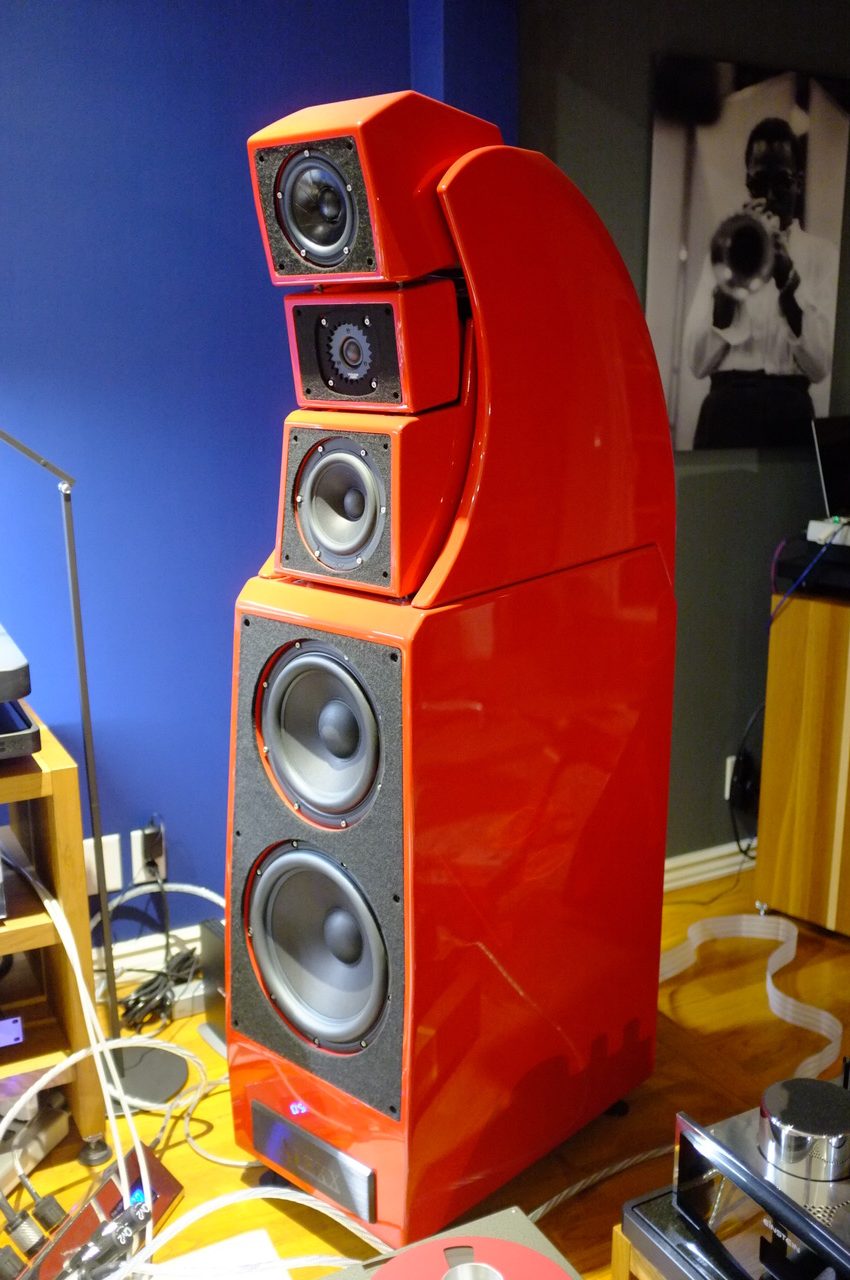
Now, Alexx is a large speaker system. Alexia—my previous Wilson reference—is also a large speaker system; even as Alexx seemingly squeezes in more or less a similar footprint as Alexia, there is no denying that upon first look; Alexx is to Alexia as Aribus' A380 is to Boeing's 767. She's a tall, serious looking figure that means serious business. Serious is also the sound quality Alexx seems to ever so effortlessly reproduce. Eagerly waiting to cue up the first beats, and still in awe of Alexx's shear dominance in my living room, I pondered which tracks to cue up first: do I opt for the usual chez K first listen tracks of Yello, Trentemøller, Olafur Arnalds, or do I stir not shake the martini? Ultimately, I opted for an all new demo track of late: Roger Waters' terrific reissue of Amused To Death, available as one of Chad Kassem's many AcousticSounds / Analogue Productions incredible titles. Supervised by Roger Waters himself, this reissue is quite the sonic wonder: available in all hi-res formats, I opted for the double vinyl version. Cued up on my trusted Brinmkann Balance / 4Point / Lyra Etna via EINSTEIN's The Turntable's Choice phono, The Preamp and The Poweramp all wired with Nordost V2, I was eagerly waiting to hear how Alexx would perform. Leveraging QSound, which through magic trickery manages to convey super 3D-like imaging from a mere stereo source, the entire recording is a must listen, even if you aren't totally keen on the music itself. Pink Floyd's most excellently famous production values, coupled with Roger Waters' artistic influence, produces an album of great musical colors and a sonic tapestry that's heavy on dynamic resolution and tuneful, albeit sometimes strange, tonal colors. Allmusic's Stephen Erlewine aptly calls it Water's masterpiece. Even as QSound does its fooling, phase coherency in the reproduction chain is a simple must. Similar to SonoruS audio's Arian Jansen's virtual surround sound and super stereo files (though I would resolutely argue that Arian's all analog solution is simply the better, read: more realistic one), this technology relies heavily on the overall phase coherence of the speaker system to fully reproduce the surround sound effects and spatial cues. Cut 1, side 1, "The Ballad Of Bill Hubbard," opens up with a slowly rising guitar sequence intertwined with various slowly rising, yet ever so faint, street sounds which are mixed in QSound, i.e. are supposed to convey a truthful 3D image. First, I was immediately struck by the sheer size, height, width, and overall dimensional aspect Alexx was throwing into my living room. Whereas other speakers I have heard and am intimately familiar with give me a canvas, Alexx gives you IMAX. Then, suddenly, at about the 1:36 mark, at my 4 o'clock position, I hear a dog barking. Chloe, chez K's resident hound nowhere to be seen (she was with her mama), my mind immediately refocused its attention to Roger Waters, instantly realizing that it's the track's cleverly mixed QSound dog barking in the faint distance. Now that's what I call realism. Assuring myself that I had in fact heard right the first time, I re-cued the 4Point, dropped the needle and quickly moved to listen again. Yep. There's that dog again at my 4 o'clock! Now you may not feel the need or want to experience surround sound from a mere 2 channel speaker system; in which case I'd like to reposition your thinking to the technical aspect—with Alexx, you have phase coherent speakers, which translates into far more real world benefits than just sonic trickery.
Attack, sustain and decay of the guitar; the slowly building drum line at around 2:30; the continuously QSound mixed and interwoven voices and other such spatial cues throughout the track are all reproduced with such effortless means that at first you wonder if this is indeed reproduced by a nearly half-ton speaker system, until you realize that it is in fact reproduced by exactly that. You'd expect a speaker system of this size to go nuts with dynamics, image density, and size; you'd expect these qualities to trump—ha!—all others; you'd be wrong. Mimicking the best mini monitor sized acts of disappearance, once you have music playing through Alexx, you quickly forget their size. Lights out and you are quite literally fooled; whereas smaller speakers (including Wilson's own line-up) hint at the actual size of an image, listening to the same track back to back via Alexx gives you the impression of perhaps the most clichéd and overused term in HiFi, namely that of lifelike sound and size. Guilty of the charge myself, it is perhaps the quantitative benchmark of Alexx.
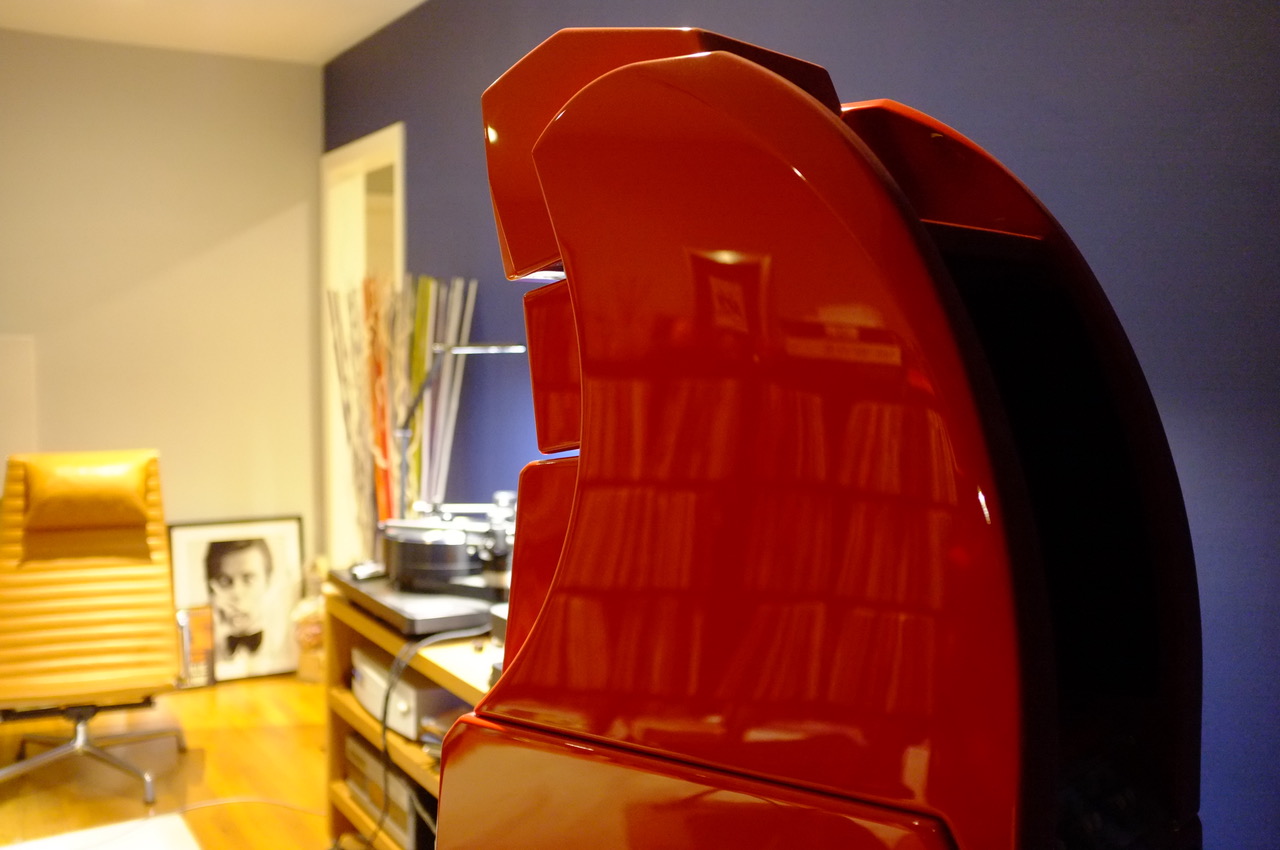
You would think that given Alexx's 5 drivers (and no doubt resulting complex crossover), overlapping frequency regions, particularly in the critical midrange, would result in some sort of overt frequency dips and clips: there simply are none. In fact, so coherent and tonally accurate is Alexx throughout the entire frequency spectrum that you never get the feeling of listening to an image derived of multiple sources. Take for example, Edgar Varèse's "Ionization" track off the stupid great Speakers Corner reissue (long out of print) of the same name with Zubin Mehta conducting the LA Phil. A fantastic percussion piece, it contains pretty much the gamut of the entire hearing range and then some: written for 13 percussionists, it includes, amongst others, 3 bass drums, 2 tenor drums, 2 snares, bongos, crash cymbals, glockenspiel, sirens, and many other bells and whistles. A tour de force for anyone and any system to resolve, I eagerly cued up the track to listen. Undoubtedly, this track reveals, nay, ruthlessly reveals your systems' capabilities front to back, six ways to Sunday. Dynamic (both macro and micro) realism, spatial resolution, frequency extension, and imaging are all put to test in perhaps the most coherent of fashions; any and all system deficiencies are ruthlessly revealed. Don't be fooled folks, this is an almost mandatory demo track for any system to capture. Now then, the piece starts off light and slow, with drums, bells, and sirens all continuously coming into focus in ever greater scale and presence. As the volume of individual instruments gets louder, they are all collectively building up the spatial construction in ever greater detail; you hear great complexity of interlocking and overlaying instrumental tones building up; this is then followed by a relaxing of tensions and a slowing of the rhythm with the entrance of the chimes, sirens, and bells. If a track with greater dynamic and tonal color swings exists, I for one would like to know. Within all these interlocking planes of rhythm and color, the recording presents and contains within information to recreate truly Grand Canyon like sound staging and imaging. Hearing Alexx resolve the last bit of it in such great detail, and with such visceral impact, is rather remarkable, and a testament to the engineering team and their steadfast insistence on creating a next generation masterpiece. The speed of the drums, the resolution of the subterranean bass lines, and their projection into the living room is goose bumps inducing, and quite frankly, intoxicating. Then, quite suddenly, the juxtaposed delicate softness of the glockenspiel, with all of its rich and colorful overtones, presents a challenge for the other extreme: here, any and all driver deficiencies, crossover issues, or time misalignment would be heard in an instant. Given Alexx's fanatic attention to time alignment, with each of the upper modules being adjustable in typical Wilson Audio precise and repeatable fashion, no traces of temporal smearing of any kind can be heard. Simply put, the clarity of the sound, the stability, and stupendous definition allow this piece to be experienced in ways I have never heard before.
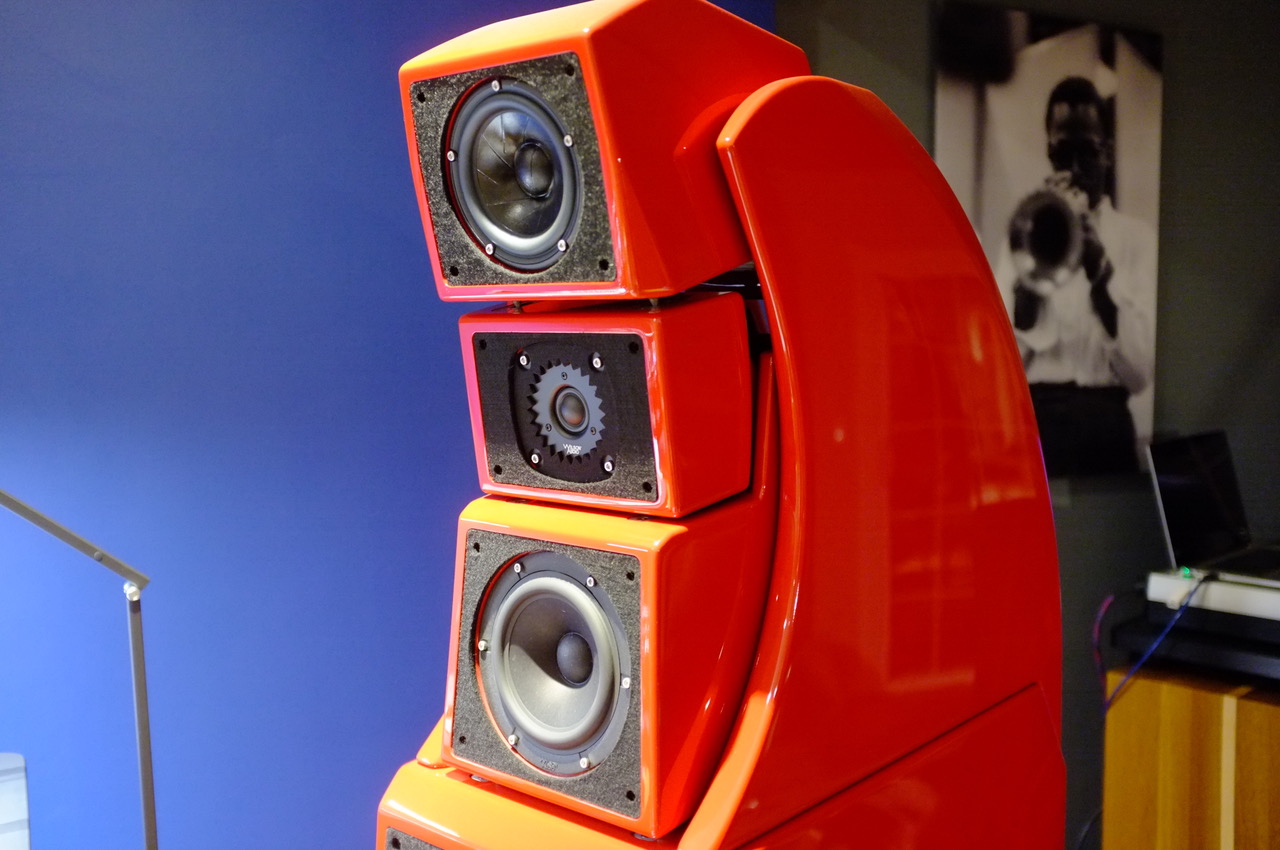
I quickly followed up Varèse's stereophonic spectacular with a cut and recording that the late great Harry Pearson recommended to me many, many years ago: "Scheherazade" conducted by Fritz Reiner with the awesome Chicago Symphony, recorded and released by RCA the "golden years" standard. Reissued more often than even Star Wars, this golden goose of a recording is truly remarkable in its presence, scale, and sheer beauty. A recent find of Classic Records' 4 LP 45rpm reissue of the early 2000s, the recording reveals not only the magic of the performance, but the nuanced spatial cues and minute variances of the concert hall. Arguably, most ‘philes will go on record that for demo purposes, the first and last movement are the magic bullet. Here again, Alexx shines with its silly ability to resolve the most subtle of textural and timbral cues, revealing the complexity and resolution of Sidney Harth's famous violin solo. Frankly, the utter disappearance of Alexx, leaving behind only the violin, is a sight and sound to be revealed: gently weaving and interpreting Rimsky's composition, Harth's playful mannerism comes out full tilt. Multi-driver setup? Complex crossover? Big speaker? Massive woofers? Dense cabinet? You'd be hard pressed to hear any of these components, so radically revealing is Wilson's latest.
On "Author's (good British electronica) After Time," the opening track to their second album, Forward Forever, Alexx's dynamic properties and propulsion energy yet again come to full shine. The SPL meter knocking on 100+ dB, the density of the bass line coming in around the minute and twenty mark are nothing short of extraordinary. The usual axioms of pants flapping, walls shaking, neighbors rumbling, and your dog seeking refuge in some safe space rear their heads with swagger and dashing good looks second only to 007. Recently, whilst pegged at the aforementioned death-defying 100+ dB, my reasonably solid candle sitting atop the nearby coffee table shook itself off and away. Fortunately for me, it wasn't lit. Alas, word to the wise: secure any and all loose cannons, candles, dogs, and small kids; they will no doubt be in danger of getting smacked around by Alexx's 4 massive woofers generating bass energy full tilt.
Moving on to my ever growing tape collection, I cued up SonoruS audio processed virtual surround sound copy (from the original 5.1 SACD) of Alison Krauss' "New Favorite," performed live in concert, and formerly available from the crew over at Mobile Fidelity Soundlabs. Fetching well over hundreds of greenbacks on eBay, I asked Arian Jansen of SonoruS to fashion me a fresh demo tape, including this track. Recall my earlier comments of Roger Waters' QSound enabled "Amused To Death" and its sonic attributes. Truth be told, while QSound upon first listen is great, SonoruS audio's Virtual Surround Sound is an altogether different—superior—beast. Arian has essentially developed an all analog process that is able to fold in and then via any two track playback medium, unfold five channel (or 4 or 3) surround sound information. The only requirement being properly set up, and phase coherent speakers. Due to the process involved, it is the phase coherence of a speaker that enables these tracks to be unfolded and projected back to the listener. Sounding rather spooky in theory, (no seriously, I hear you), hearing it in person leaves many quite speechless. The proof is in the pudding. Thusly, the general experience of hearing this track on Alexx goes something like so "WOW! Holy S#$%IT! W$F!," followed by other known and unknown expletives. Even as this particular cut isn't so much surround sound heavy, the added spatial information, the audience's presence, and Alison's Union Station crew up on stage is truly an IMAX like epic event. Holographic imaging, precision sound staging, 3D realism recreate an image in your living room that you simply have a hard time believing to be real. Tangible? Check. Lifelike? Check. Truthful? Check. Illusion accomplished, like nothing I have ever heard before. About half-way through the track—or sooner—you sort of settle into this mid-pack audience experience and pay attention to all of the harmonic structures and resolved vocals that unfold before you. There's a certain realness to Alexx that I frankly have never before experienced, let alone approached in my home. Hints here and there, sure; approximations and derivatives, sure; but never such unshakeable realism and sheer dominance as experienced with Alexx.
Now, several months into Wilson's latest having firmly settled into chez K, I am often asked the question of just how much better Alexx is compared to other speakers I have heard. Truth be told, in many ways it's perhaps the most difficult question to answer, and frankly, difficult to pen. To me, this speaker uniquely demonstrates what HiFi is all about: the recreation of recorded sound with the utmost fidelity and SPLs to match. From one frequency extreme to the other, Alexx's ability to reproduce an illusionary image of depth, size, width, and space is the best I've ever heard in my home. No matter if it's the Pines Of Rome, The Firebirds, Jackson's Off The Wall, Boris Blank's Electrified, or delicate cuts like "Scarborough Fair," "Solsbury Hill," "Brothers In Arms," Eno's latest "Reflection," Beacon's "Feeling's Gone," Cluster, Tangerine Dream, Dean Martin, Johnny Hartman's "Once In Every Life," each and every track played back via Alexx gives you the illusion of being there. Truly. When airy highs were called for, Alexx delivered; when bass was called for, ditto—conversely, when it was not called for, it wasn't there either. Vocalists floating magically, magnificently between the speakers, small scale dynamic swings—the intrinsic, truthful harmonic structures—immediately noticeable and oh so clearly delineated—yep, that's Alexx too.
At $109k a pair, you'd most certainly expect any speaker to reproduce all these attributes and then some; and rightfully so. That's a whole lot of dough. Cough, rasp, cough. To the initiated—i.e. those who already drink from HiFi's Kool Aid—the speaker's price point has today become quasi accepted. To the uninitiated, the price point seems absurdly ludicrous. That is of course, until they are educated on the "Why" question. No more could your average weekend warrior speaker "guy" create a transducer like Alexx than violently shaking the pieces of a Daytona hoping for the final product to magically materialize in your mystical box of trickery. A quick review of the facts, a visit to the Wilson factory, would reveal the resoluteness and sanity of Alexx's asking price. As far as I'm concerned, Wilson hit a homerun—more to the point, Daryl Wilson and his team created a reference quality "final" speaker system that has all the qualities and probably a few more that I missed referencing; a product review is just that, a snapshot more or less, of the value a product generates. With Daryl's appointment to CEO just before CES 2017, Wilson is now charting a new course: if you have the dough, if you have the means, I would personally insist on dragging you to the nearest Wilson dealer for a listen—I have no doubt in my mind that you'd write that check or flash that Centurion card. Now then, what remains to be done is to get those unaware of this grand hobby to open their ears (and eyes) to the wonders of high fidelity music playback. Most highly recommended, A+++++
Alexx Loudspeakers
Retail: $109,000
Wilson Audio




